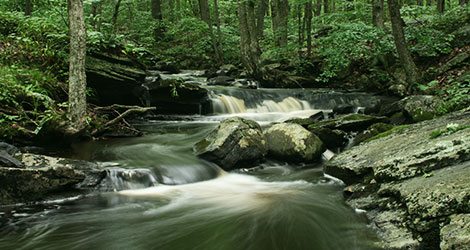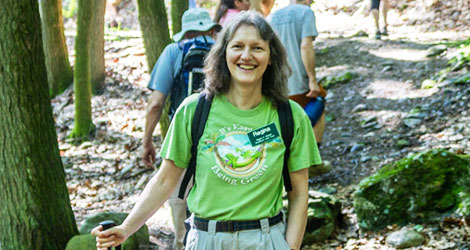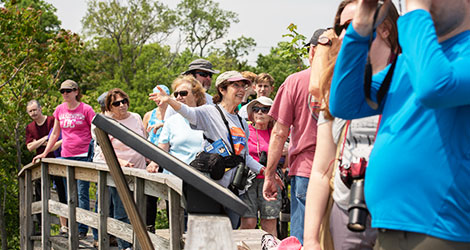
On the Trail
The Quinnipiac Trail
By Kathy Carlson
On a warm June day in 1971, a friend and I hiked a blue-blazed trail in northern Hamden to a vista point on Mt. Sanford in the Naugatuck State Forest. The rocky trail climbed steadily and was challenging in the afternoon heat, but we hiked as if we had wings on our feet—we were celebrating our high school graduation! At the summit, we were rewarded with a cool breeze and an expansive view of the hills and woodlands to the west. We sat up there and took it all in. I didn’t know the trail’s name, but I liked its quiet, remote feel. Little did I know that this was just the beginning of a decade’s long connection with this trail.
Hiking has been my favorite outdoor activity for as long as I can remember. I love exploring an environment by walking on a trail that I’m drawn to aesthetically, emotionally, and physically. From my college years on, I hiked whenever, wherever, and with whomever possible on trails from Connecticut to Maine. It was when I began hiking with my friends Ginny and Bob Dowd that I became familiar with the Blue-Blazed Hiking Trail System. They were avid hikers and active members of CFPA and its Trails Committee. They led hikes, organized “work parties,’’ and maintained sections of several different Blue-Blazed Trails. We bonded over our love of trails and hiking and logged many miles together on trails around the state: Macedonia Brook, Mohawk, Nipmuck, Metacomet, Mattatuck, Mattabesett, Paugusset, and others. These excursions increased my understanding of and appreciation for Connecticut’s expansive trail system and CFPA’s role in making it all possible.
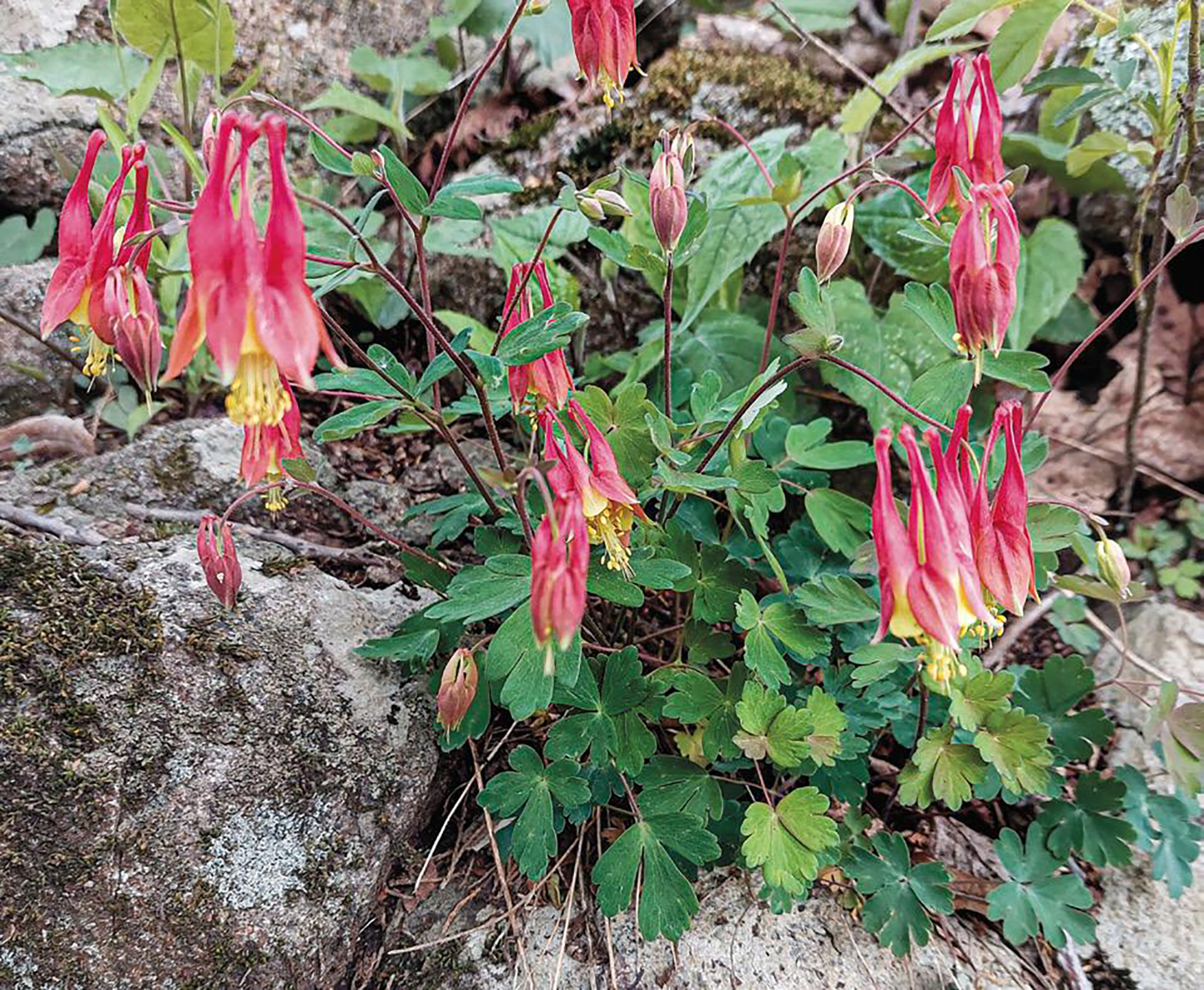
The Dowds encouraged me to participate in work parties. At that point in my life, free time was limited and precious. I would have rather been hiking on trails, not maintaining them. However, my attitude changed over time, and I grew to enjoy the camaraderie of other volunteers and a sense of reward for “giving back to the trails.” I learned about the effort required to plan, construct, and maintain them.
Although I was developing an appreciation for trail maintenance, trail management was not something that I actively sought; rather it found me following the sudden death of longtime Quinnipiac Trail manager, Howard Bassett, in the fall of 1987. Since I had some (albeit limited) experience and lived in close proximity to the trail, I was recommended for the position. The rest, as they say, is history. Since February 4, 1988, I have been the Trail Manager for the section of the Quinnipiac Trail and the associated Sanford Alternate Trail that pass through the Sanford Block of the Naugatuck State Forest.
My long-term commitment to this trail has truly been a labor of love. Like spending time with an old friend, I never tire of “visiting” the lovely summit ridge of Mt. Sanford. In spring, I know just where to look for certain wildflowers such as columbine, hepatica, and ginger. The hardy chestnut oaks and red cedars that grow in those dry, challenging conditions never cease to amaze me. And while the view from the overlook may change with the seasons, you can always count on a refreshing breeze up there. (In winter, it can feel like an arctic blast!) Judging from the entries made in a hiker log that is posted at the overlook, it’s evident that this spot is special to other people too. Another spot that has special meaning to me is the footbridge that crosses Sanford Brook. Built by my husband from native red cedar, the bridge has withstood numerous severe weather events and continues to provide a safe crossing for hikers.
Volunteering on the trail over the years has provided me with the opportunity to observe changes in the surrounding forest and to the trail itself. Weather events, including a tornado, and the spread of invasive insects like the woolly adelgid and emerald ash borer, have changed the character of the woodlands. The demise of most of the hemlocks and ash trees that once provided deep shade have left a forest that is now much more open and exposed. Blowdowns across the trail occur more frequently than in the past and must be cleared. The trail itself has changed due to necessary relocations and a dramatic increase in use. The resulting trail widening and erosion present challenges that require a variety of mitigation strategies to improve the trail’s durability.
My longevity as a trail manager can also be attributed to the fact that I truly enjoy doing the work that is a necessary part of maintaining a trail. There is a meditative quality to many of the tasks, however routine they may seem. Working quietly while painting blazes, sidehilling, or trimming overgrown vegetation along the trail requires me to focus on the task at hand. Without even trying, I find that I am “in the moment.”
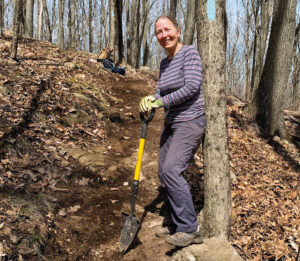
While past and present hiking experiences have brought me to some spectacular places, it is always a pleasure to return to the Quinnipiac Trail. Now, after looking after it for 35 years, the time is right to pass the honor of being its trail manager to someone new. I sincerely hope that my efforts, along with those of other volunteers and friends who have joined me in working on trail projects, have made it a place that hikers enjoy traveling and want to return to when they seek an outdoor experience.
The northern section that connects to the Natchaug Trail is especially dear to me. It passes the picnic site where my parents would take our family on summer Sundays six decades ago. From the trail I can see a boulder by the river I would sit on when I was 10. When I turned 16 and got my driver’s license, I would explore the other side of the river where the trail now goes. I remember a white pine grove where the trees were four inches in diameter. Those trees are now eighteen inches in diameter.
Kathy Carlson is a retired educator who lives in Hamden with her husband and favorite hiking partner, Dave. She attributes her love of the outdoors to her parents who gave her lots of freedom to explore the woods and farmland around her childhood home.
Learn more about the Quinnipiac Trail

